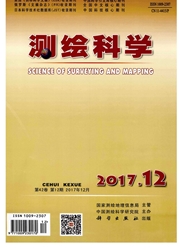

 中文摘要:
中文摘要:
通过对地球科学激光测高系统(Geoscience Laser Altimeter System,GLAS)波形数据进行高斯分解,提取精确的波形特征信息,计算出GLAS波形数据激光穿透指数(LPI),基于LPI提出GLAS数据反演叶面积指数(LAI)的新方法,建立了GLAS数据反演森林LAI的模型(R2=0.84,RMSE=0.64),并用留一交叉验证法(LOOCV)对反演模型的可靠性进行了验证,结果表明,该模型没有过度拟合,具有很好的泛化能力,最后通过人工神经网络融合GLAS与TM(Thematic Mapper,专题制图仪)遥感数据实现区域尺度森林LAI反演,用25个实测LAI对反演精度进行了验证,研究表明反演LAI与实测值较为接近,精度较高(R2=0.76,RMSE=0.69),为生态环境研究提供精确的输入参数,为GLAS数据大区域高精度LAI反演提供新的方法和思路.
 英文摘要:
英文摘要:
Based on Gaussian decomposition of the geoscience laser altimeter system(GLAS) waveform, accurate wave- form characteristics were extracted, and then laser penetrate index (LPI) was computed for each GLAS waveform. The new method of leaf area index (LAI) estimation using LPI derived from GLAS data was proposed. Forest LAI estima- tion model based on GLAS data was established( R2 = 0.84, RMSE = 0.64 )and the model's reliability was assessed using the Leave-One-Out Cross-Validation (LOOCV) method. The result indicates that the regression model is not overfitting the data and has a good generalization capability. Finally, regional scale forest LAI was estimated using combined GLAS and TM optical remotely sensed image by artificial neural network. And then, the accuracy of the predicted LAIs based on neural network was validated using the other 25 field-measured LAIs. The results show that forest LAI estimation are very close to the field-measured LAIs with a high accuracy (R2 = 0.76, RMSE = 0.69). Therefore, the estimated LAIs provide accurate input parameters to the study on ecological environment. The study provides new methods and ideas to estimate LAI with large regional scale using GLAS waveform data.
 同期刊论文项目
同期刊论文项目
 同项目期刊论文
同项目期刊论文
 期刊信息
期刊信息
